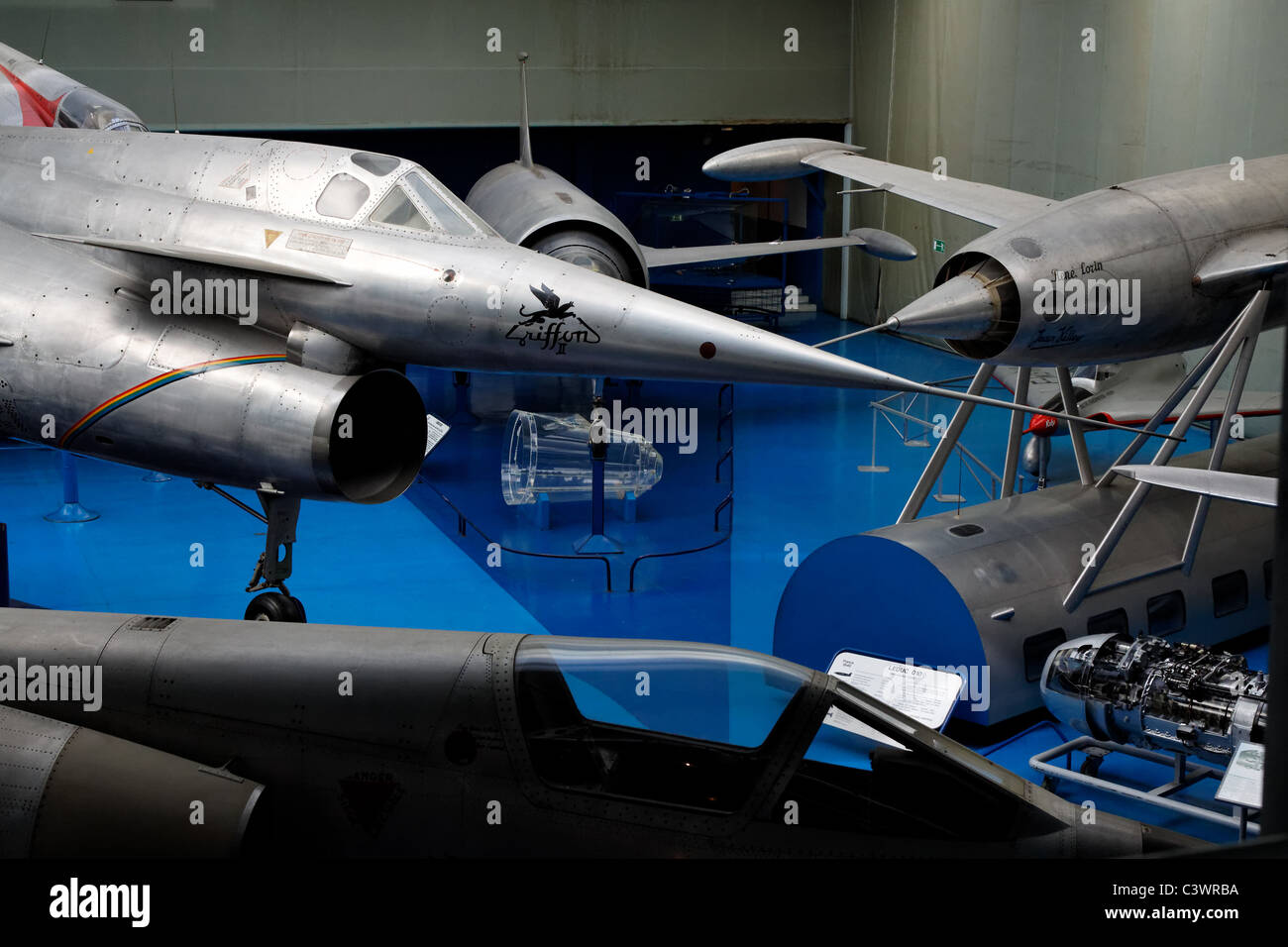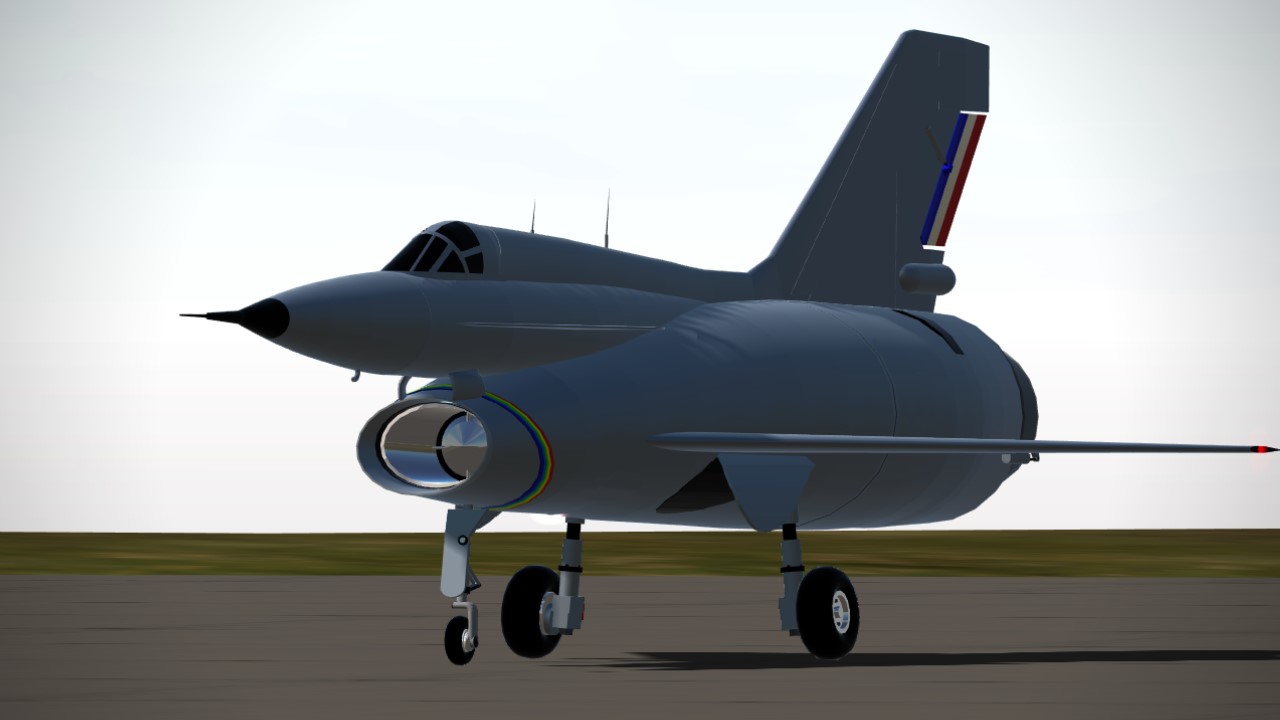Nord 1500 Griffon - We and our partners use cookies to store and/or access information on the device. We and our partners use the information to personalize advertising and content, measure advertising and content, understand audiences and develop products. An example of data processing may be a unique identifier stored in a cookie. Some of our partners may process your data as part of their legitimate business interests without asking for consent. To view the purposes for which they believe they have a legitimate interest or to object to the processing of this data, please use the vendor list link below. The consent given is used only for data processing on this website. If you wish to change your settings or withdraw your consent at any time, there is a link to do so in our privacy policy, which is available from our home page.
February 16, 2022 December 12, 2022 Nathan Cluett 1500, test, France, french, griffon, jet, Nord, Nord 1500, prototype, ramjet
Nord 1500 Griffon

The Nord 1500 Griffon first flew in 1955 and was a French experimental aircraft using ramjet technology. It had an extremely unusual design that certainly didn't make it into production, but it offered solid performance numbers for the mid-1950s.
Nord 1500 Griffon.02
The Griffon began life thanks to French government studies of swept and delta wing designs. First, a wooden glider with two types of wings was towed behind the tow plane and released. It provided much valuable information to the French Air Ministry.
Société Française d'Etude et de Construction de Matériel Aéronautiques Spéciaux (SFECMAS) was the company that built and tested the gliders.
These tests forced the chief designer to come up with a number of designs. One was powered by two ramjet engines, another was developed into the Gerfaut series, and the third became the Griffon.
The Nord Gerfaut preceded the Griffon and was the first European aircraft to exceed Mach 1 in level flight without refueling.
The Nord 1500 Griffon Ii Is A Supersonic Fighter Prototype, Developed In The 1950s By The Public Company Nord Aviation, In Response To A Call For Tenders From The French Air Force For
A pair of prototypes were ordered in August 1953 when SFECMAS merged with another company to form Nord Aviation. Both aircraft were believed to be for testing purposes only and were never intended to carry military equipment.
A turbojet engine was required to power the Griffon. A jet engine would allow unassisted flight, while a ramjet could achieve a much higher speed in the air and a speed of 1000 km/h.
Due to the design of ramjets, they cannot travel at 0 airspeed; which means they cannot move the aircraft forward from a standstill.

SNECMA ATAR 101E-3 turbojet Griffon (in background) and Nord ramjet (on ground) together. Image: Duch CC BY-SA 4.0
Fonderie Miniature 1/48 Nord 1500 Griffon Ii By James Mine…
For safety, the first Griffon did not have a ramjet installed and this had to be done later.
A scene only a mother could love was the attempt to create the fastest airplane possible. It has a large fuselage with an overhead cockpit in a design similar to the F-16, and a delta wing.
Canards were placed on either side of the cockpit to counteract the inherent tendency of delta wings to lower the nose of the aircraft at transonic speeds.
The first flight of my Griffon took place in September 1955. It did not get off to a good start as the test pilot found it too underpowered and lacked a ramjet.
Nord Gerfaut: France's Daring Delta Wing Research Aircraft
However, testing continued, and four months later, in January 1956, the Griffon made its first high-speed flight, reaching Mach 1.15. Unfortunately, in June the nose gear fell off while going over a field, seriously damaging the aircraft, and as a result it did not fly again until July.
Next came the Griffon II, equipped with a ramjet and different from the first prototype, with a longer fuselage and an even wider receiver. He flew for the first time in January 1957.
Three months later, in April, the first crash test took place, which also fared poorly, only reaching a speed of Mach 1.3. This was because the aircraft was not getting enough air.

To combat this, Nord Aviation has once again increased the air intake, which works wonders. This modification greatly increased the aircraft's speed to Mach 1.85 and even set a speed record of 1,440 mph (2,320 km/h).
A Busca Pela Velocidade!
In June 1961, the Griffon II was retired from service. But all was not lost. The French gained a lot of knowledge from these experiences, which even the USA watched with attention.
The biggest concern was the ramjet exhaust, which was so hot that it often damaged the tube. The metal skin of the plane was also damaged at high speed.
While the plane itself may not be going anywhere, the lessons learned from the test remain invaluable. So while this plane looks a little crazy, the French definitely knew what they were doing.
The careers of most entry-level aircraft and military transport aircraft are generally short. However, there are some notable exceptions
Nord 1500 Griffon..details/4 Views/history/markings (581dd)
Here we love to document, discuss, explain and just reflect on the fascinating history of the many extreme, weird and wonderful aircraft that have graced the skies since the first human flight in 1903. The Nord 1500 Griffon was an experimental fighter. designed and built by government aircraft manufacturer Frch Nord Aviation. The Griffon was intended as a Nord Gerfaut research aircraft with a supersonic speed of Mach 2. Aircraft development began in earnest in 1953 after receiving a letter for a pair of unarmed research aircraft. The design featured an innovative twin turbojet engine configuration; the first is used to gain enough speed to take off and launch the second.
The first prototype, called the Gryphon I, made its first flight in 1955 and eventually reached a speed of Mach 1.3. Since it did not have a ramjet, it was mainly used to study the aerodynamic properties of the aircraft and its systems. Its flight testing was terminated shortly after the ramjet-equipped Griffon II completed its maiden flight. This aircraft reached a top speed of Mach 2.19 and in 1959 set a world record for a small closed course. It last flew in 1961 and is now at the Air and Face Museum outside Paris, France.
The Nord 1500 Griffon evolved from government-funded delta and swept-wing research. To provide data for this study, Arsal de l'Aéronautique (the nationalized predecessor of SFECMAS) built an Arsal 1301 wooden glider that could be equipped with both delta and swept wings, as well as with and without wings.

SNCAC Martinet, Douglas DC-3 or SNCASE Languedoc transport aircraft were taken to the launch site, the glider provided valuable information for the Gerfaut design.
Mixed Power Experimental Fighter Xf 88b, Used To Test Different Propellers At High Speed. It Had A Turboprop, And 2 Afterburning Turbojets. It Could Exceed Mach 1 In A Dive, Becoming The First Plane
To use this information, SFECMAS Editor-in-Chief Jean Galtier initiated the 1400, 1500 and 1910. suspension designs with delta wings and various types of propulsion systems. The 1400 was developed into the Nord Gerfaut series, the 1500 became the Griffon, while the 1910, characterized by two large ramjet diamonds, never followed. Gauthier envisioned the Griffon as a Mach 2 successor to the extraordinary Gerfaut. Arsal was then privatized as SFECMAS - Société Française d'Etude et de Construction de Matériel Aéronautiques Spéciaux. The Griffon, a large ramjet with turbojet stability, was developed from the SFECMAS 1500 Guépard (Cheetah) following the merger of SFECMAS with SNCAN to form Nord Aviation.
A pair of prototypes were ordered on 24 August 1953, although the final contract (No. 2003/55) would not be awarded until 1955. Although the Nord was intended to meet the light pressure requirements that could be used by grass airfields, these two aircraft were installed without any military equipment, intended only for research purposes.
As he had done with the Gerfaut, Gauthier chose a direct vent to keep the air as still as possible and placed the single-seat cockpit directly above the ventral semicircular vent. The large tubular fuselage carried the same delta wing used on the Gerfaut and a rudder vertical stabilizer. The forward fuselage had small triangular fins on either side of this compartment that counteracted the delta wing thrust and compressed the nose as the aircraft approached transonic speeds. The aircraft was equipped with a three-wheel propeller that retracted into the wings and under the air intake.
A turbojet allows the aircraft to take off without assistance (ramjets cannot generate thrust at zero speed and therefore cannot move the aircraft from a standstill), while a ramjet, when reaching an airspeed of more than 1000 km, provides the aircraft with additional thrust. /hour (600 miles). To minimize the risks of using a turbo-ramjet powerplant, the first Griffon (Nord 1500-01 Griffon I) was built with only the 37.3-kilowatt (8,400 lb) SNECMA Atar 101G21 ramjet-mounted turbojet. later date.
North 1500 02 Griffon Ii \
The "Griffon I" plane flew on September 20, 1955 with pilot Andre Turkat. Flight testing soon proved the aircraft to be underpowered, this decision was overturned
Marker griffon, griffon, kamik griffon, brussels griffon, pointing griffon, griffon prep, griffon dog, nord, hotel griffon, wirehaired griffon, megabass griffon, griffon puppies


0 Comments